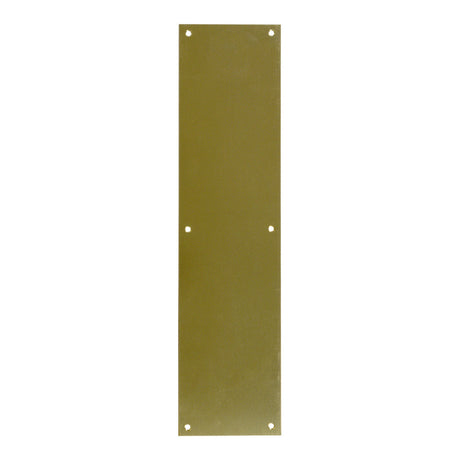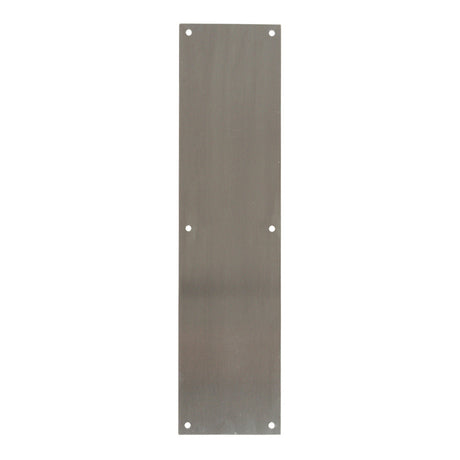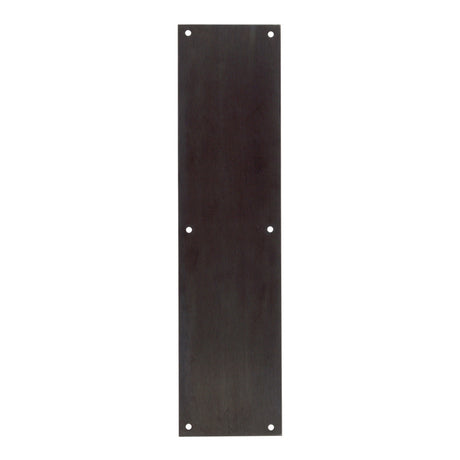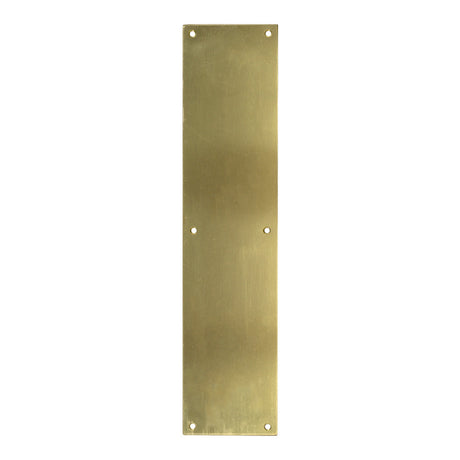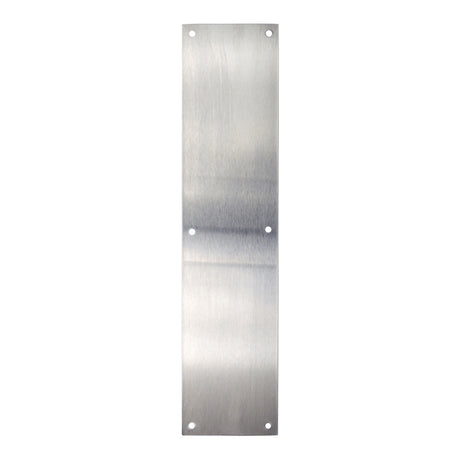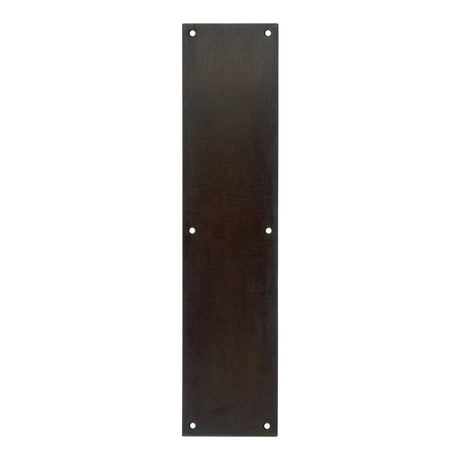Are your doors constantly covered in dirt, handprints, or smudges? High traffic areas call for creative solutions, which is exactly what HardwareSource provides in our push plate selection. Door push plates are intended to protect the wood of doors that close automatically, such as swinging doors and doors with pull handles on one side. Push plates are also great for schools and business of all kinds, including offices, restaurants, and stores. We offer several distinct finishes to choose from, so you can complement any of the existing hardware finishes in your home or office.
Push plates for swinging doors are designed to make opening and closing doors as easy as possible, which comes as a welcome relief for anyone whose home or office is covered in fingerprints. Unlike pull plates, push plates are usually installed on the side of the door that you push against to open it. When it comes to double swing doors, a push plate can be installed on both sides. One of the main benefits of installing push plates on the doors in your home is that they will protect the finish and prevent the oils on your fingertips from impacting their appearance as time goes on.
Our push plates for swinging doors are made from high quality materials to provide corrosion protection in demanding environments and high-traffic areas, particularly in terms of coastal applications. Best of all, we offer several decorative finishes to choose from, so you can find a push plate that will match the existing door hardware. Polished brass is warm and inviting. Oil-rubbed bronze is ideal for anyone who prefers the old-world look and feel of hardware. Satin stainless steel eliminates the shine of traditional steel, but its silvery-white appearance is perfect for cool, contemporary houses.
How to Install Door Push Plates
Installation is fairly simple and straightforward! Start by stabilizing the open door using a doorstop or wedge. Position the push plate vertically at the face of the door with one edge measuring 1 ½ inches from the outer edge of the door. Reposition the plate as needed, so that the center of the plate is approximately 42 inches from the floor. Mark the screw holes by using the machined holes in the plate and a pencil. Make dimples in the door for the screws at each mark you made using a hammer and a nail set. Position the push plate at the desired location and align the machined holes with the dimples you made. Attach the plate to the door's surface using a drill with a screw-tip attachment.
Give your home the hardware update it deserves while also protecting your doors from everyday use. With a wide variety of finishes to choose from, finding the right swinging door push plate for your home is easier than ever before. We are also here to help if you have any questions while browsing our selection of door push plates. Our knowledgeable hardware experts are available to help you via live chat or you can contact us by phone and email for further assistance.

